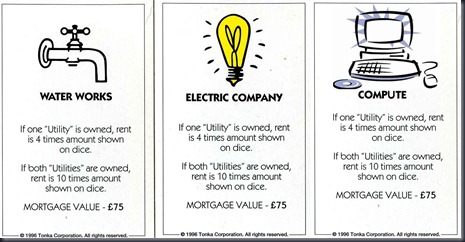While there are many definitions of cloud computing published on the Internet most fall short on perspective. Cloud computing is touted as everything from just a rebadge of existing technology to a whole new paradigm shift in information technology. To determine the truth, it’s worthwhile taking a step back to get some perspective on computing technology and where we are in the information technology maturity cycle.
History Repeating
We’ve been here before albeit with other technologies. If you owned a factory before the industrial revolution you had a couple of choices, either you build next to a river and tap power from a waterwheel or you use grain fed horsepower. That proved to be quite restrictive and expensive for most factories which often continued to use human power as a more convenient alternative.
Then the industrial revolution brought a leap of technology with the new on-premise steam engine to generate the power for your factory. This freed factories to be able to build closer to the population centres required to run the factory and closer to raw materials used in production. This represents a “mountain to Mohammed” economic leap forward, bringing the energy source to the factory rather than the factory to the natural energy source.
But eventually even here economics sniffs out inefficiencies. Every factory had a large upfront capital expenditure on a power plant, large areas of floor space were dedicated to power generation and expensive specialist engineers were employed on the payroll to support the power generation unit (sound familiar?).
Companies such as General Electric and peers recognised an opportunity to centralise power generation and transport it in the higher value form of electricity to where it was required. The new electric utility “featured reliable central generation, efficient distribution, a successful end use (in 1882, the light bulb), and a competitive price”. By outsourcing power generation, factories could use that free floor space, capital and labour for their core business while paying for only as much power as they use. By centralising generation, power companies were able to realise economies of scale by using larger, more efficient power generation to drive down prices.
Cloud Computing
So what is my definition of Cloud Computing? Simply; “The utility model applied to compute”. The way I see it, this new utility will earn its place on the Monopoly board of the future alongside the other utilities we now assume to be provided off-premise by infrastructure and utility companies.
So cloud computing isn’t an entirely new technology; rather it is existing technology repackaged and sold in small pay as you go units to many customers. Customers are free from the burden of sunk capital expenditure and providers are free to on sell the service to many customers in a way that will encourage better capital utilisation, such as auctioned or off-peak usage charges.
Betting the house
So if Cloud Computing is the new Electricity then the days of the little steam engine (data centre) on premise should be numbered. This is a game changer for companies providing small servers and the software it runs on. There’s a very strong and fast move toward small personal, always connected devices connected to large centralised computing infrastructure. Little wonder then that one of the leaders in information technology for the last few decades, Microsoft, is “betting the company” on two technologies, mobile phones and cloud computing. If history is any predictor then there should be a veritable gold rush of companies trying to fill the new cloud space. In fact Microsoft has dropped over $US1 billion building cloud infrastructure just trying to catch up with the incumbent providers Amazon and Google. They are adding 10,000 servers, enough to run all of Facebook, every month.


There are also many other vendors rushing for the new goldmine of outsourced compute, some brand new companies others rebadging or shifting up the value chain from hosting or down the value chain from software. Again the history of trains, gas and electricity tells us one thing is for sure, there are already many more players than there needs to be and there will be a period of consolidation after the boom. The trick is to pick a horse that will last the distance. The difference here is if you pick the wrong one you’ll be left with a bigger problem than a train ticket you can’t use.
New Possibilities
With new technology come new possibilities. For Cloud computing it arrives at a time where personal hand held devices are just becoming sensory and always connected. The huge explosion of information possible from these devices is really only consumable by the largest of data centres. Such processing power was previously only available to the largest multinational companies with huge capital expenditure programs but sadly little appetite or scope for innovation. Now, however, that same processing power is available to any kid with a good idea and a credit card. Larry and Sergey had to scratch up their life savings to purchase 40Gb of hard disk to index the Internet, today that barrier to entry is gone.
Penguins and Polar Bears
So what of the large corporates, how is Cloud Computing affecting them? At a recent Gartner conference a good analogy was made. Cloud computing is like an iceberg, snapped off from the mainland and floating in the ocean. On it are penguins and polar bears all looking at each other waiting for someone else to jump.
While there are economic benefits to cloud computing, the human aversion to risk and change especially in large corporate companies will see many polar bears afloat paralysed by fear. Meanwhile the smaller more agile penguins are more likely to make the leaps necessary to capitalise on new technology. Corporates will inevitably take on cloud computing via a number of different routes. There will be the proactive companies who plan and fund innovative cloud development and deployment projects. There will be the reactive companies, who are forced into deploying new cloud services to compete with more competitive players taking big profits and market share. And there will be the reluctant companies who find themselves with cloud deployed services coming through the back door as they assimilate those smaller more agile competitors.
Which Cloud adoption strategy are you?






